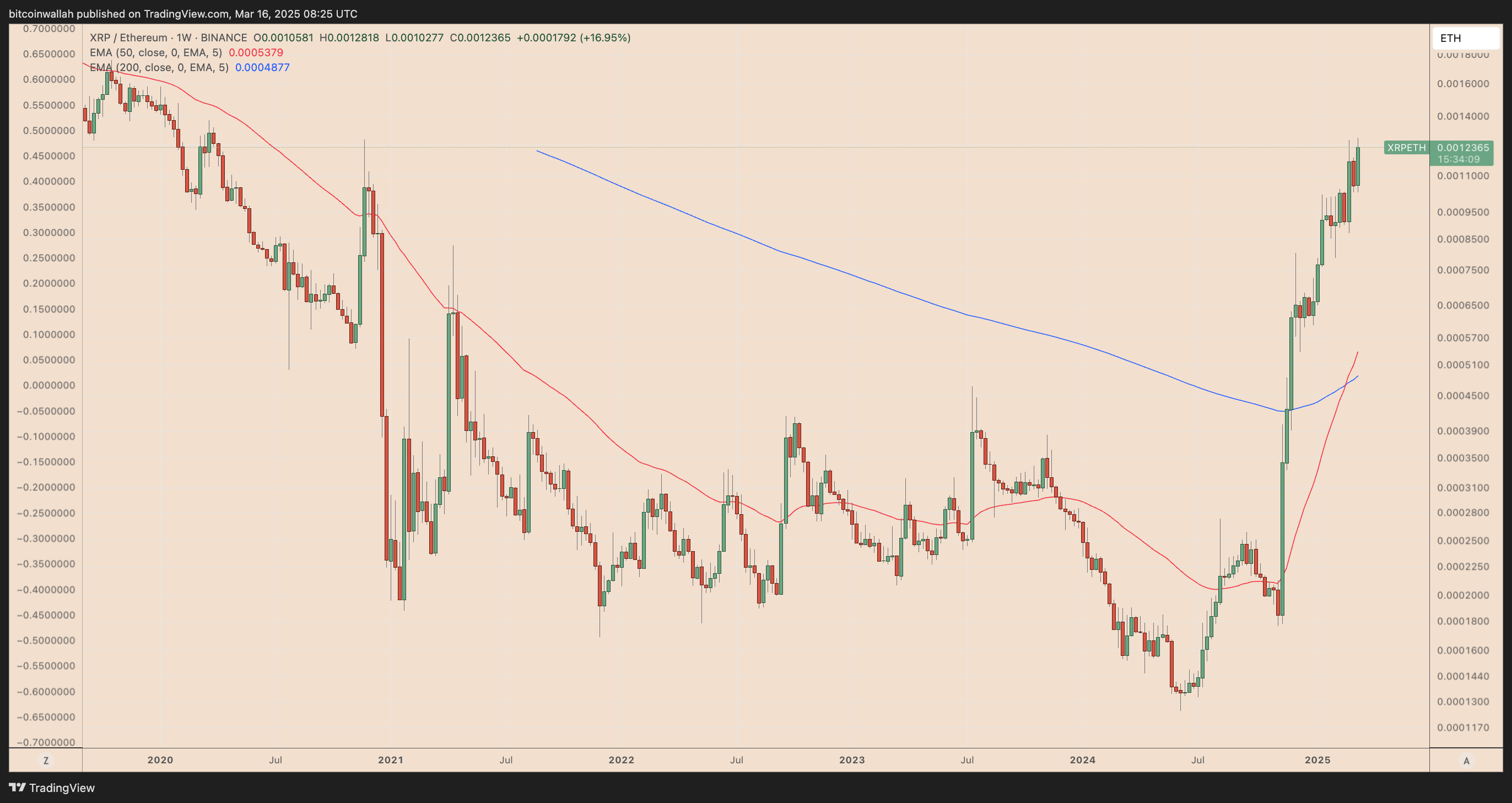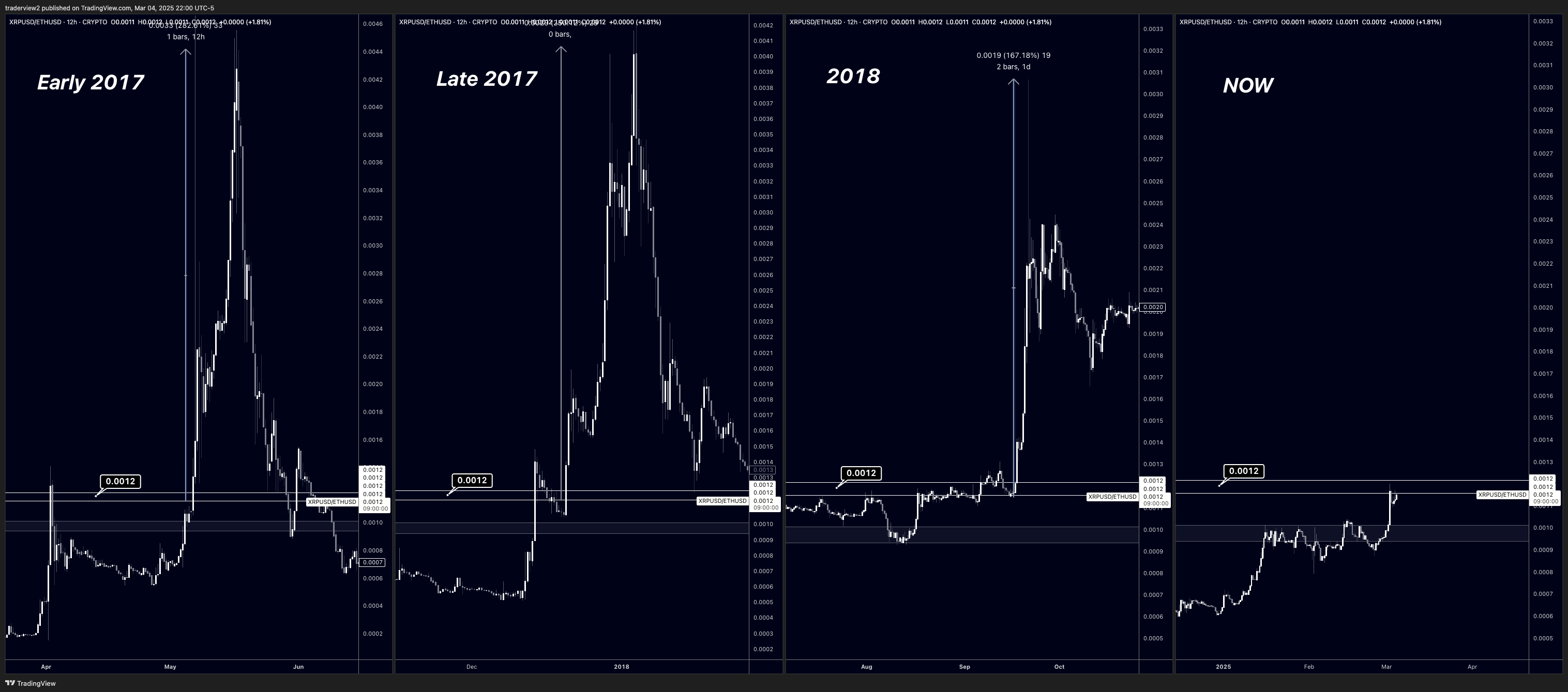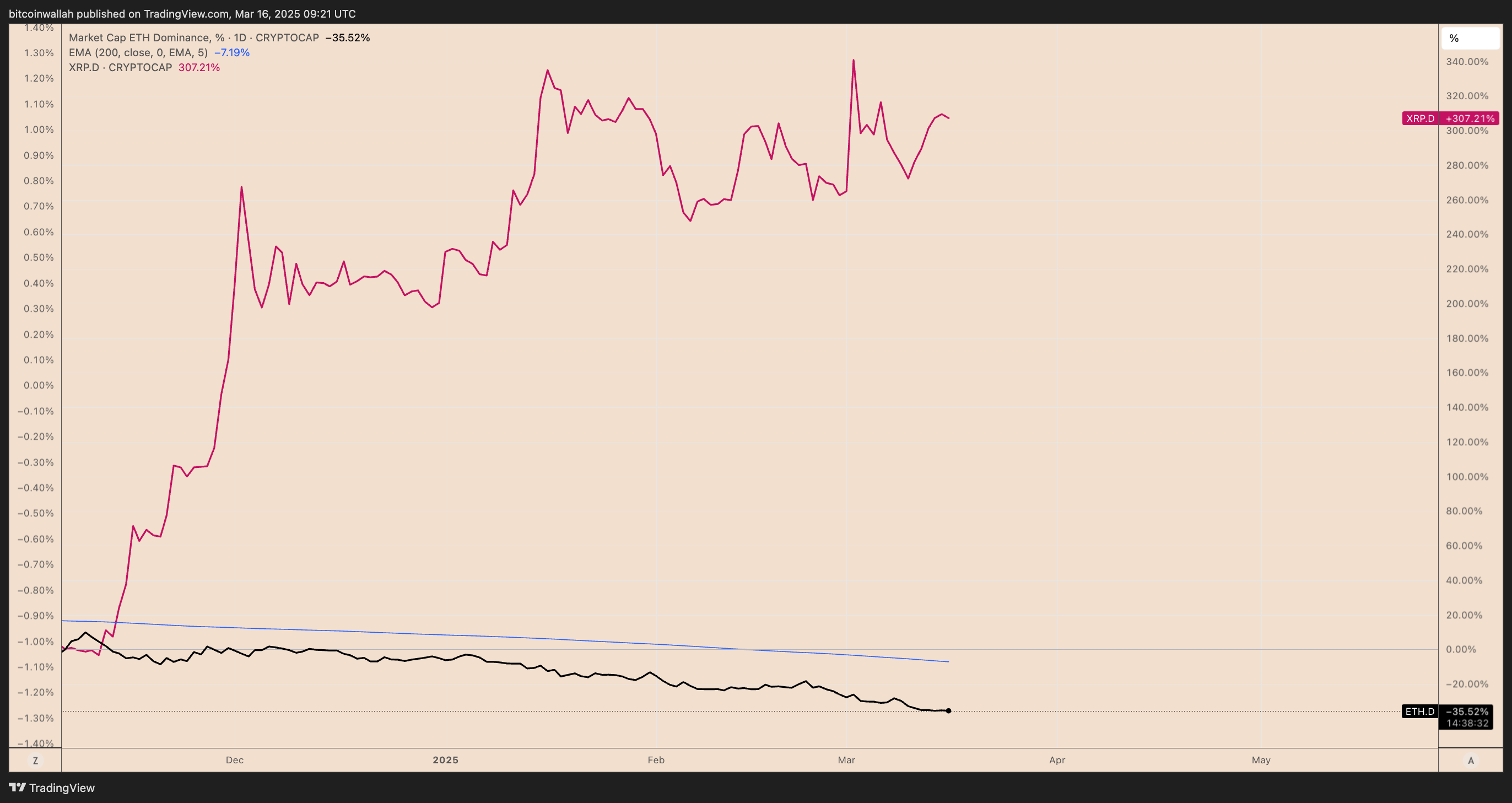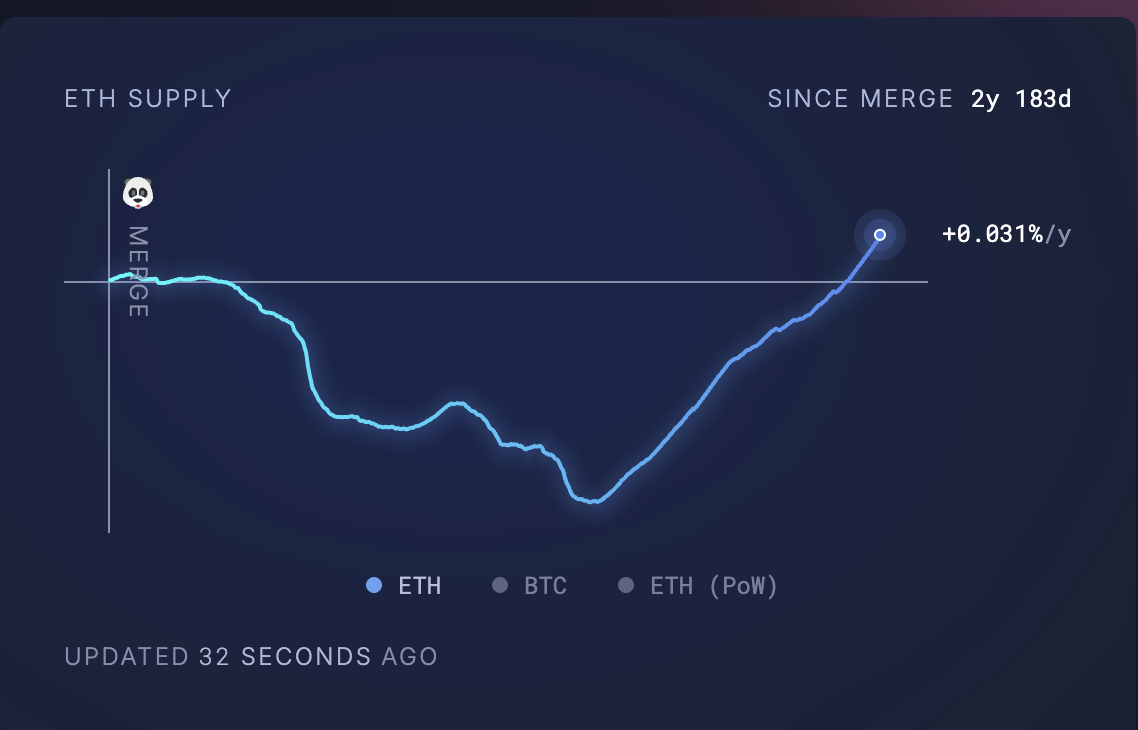The price of XRP (XRP) against Ether (ETH) surged over the weekend to its highest point in five years, enhancing its recovery further.
On March 15, the XRP/ETH pairing reached 0.00128 ETH for the first time since April 2020. This represents a staggering 925% rebound from its all-time low of 0.00013 ETH hit in June 2024 and around 620% growth since November 2024, coinciding with Donald Trump’s election win.

XRP/ETH weekly price chart. Source: TradingView
Possibility of XRP Breaking Out Against ETH
The XRP/ETH upward movement is igniting speculation among analysts that XRP may overtake Ether as the second-largest cryptocurrency by market cap.
For example, an analyst has pointed out the significance of the 0.0012 ETH level as a critical resistance zone, which has historically been a precursor to dramatic price increases in previous cycles. This analyst noted that XRP has often experienced explosive growth after overcoming this resistance, sometimes yielding gains of at least 160% in the past.

XRP/ETH 12-hour price chart. Source: TradingView/Dom
This analyst illustrated this trend with three notable breakout instances in early 2017, late 2017, and 2018, where XRP surged against Ether after successfully breaking through the 0.0012 ETH resistance level.
As of March 16, XRP is once again testing this essential threshold. Should history repeat itself, even a partial rally of around 80% could allow XRP to surpass Ether in market capitalization, especially since Ether’s price may face further declines in 2025.
Related: XRP price set for 46% gains after Ripple secures initial license in Dubai
Currently valued at $138 billion, XRP’s market capitalization is less than $100 billion away from Ethereum’s. Additionally, XRP’s fully diluted valuation briefly exceeded that of Ethereum earlier this week.
To clarify, fully diluted valuation (FDV) denotes the total potential value of all tokens, including those not currently circulating, while market capitalization only reflects tokens in circulation.
What’s Causing Ethereum to Lag Behind XRP?
Since Trump’s reelection on November 5, XRP’s market share has increased by over 300%.

XRP.D vs. ETH.D daily price chart. Source: TradingView
Conversely, Ethereum has witnessed a decrease in its market share by over 35.50%, highlighting a marked decline in trader interest compared to other leading cryptocurrencies.
A significant factor behind this divergence is regulatory sentiment. Trump has proposed making the U.S. the future “crypto capital of the world,” appointing pro-crypto regulators and promising a more supportive regulatory landscape.
This shift has primarily benefited XRP, which serves enterprise clients, especially after Ripple revealed an institutional DeFi roadmap in February.
On the other hand, Ethereum has faced challenges from increasing competition with other layer-1 blockchains, notably Solana (SOL).
The Dencun upgrade in March 2024 aimed to enhance Ethereum’s scalability by reducing transaction fees by 95%. However, it inadvertently diminished ETH burn rates, resulting in an increased supply that undermined its deflationary narrative.

ETH supply rate since the Merge. Source: UltraSound Money
Meanwhile, Solana’s influence has grown, with its trading volume now competing with that of Ethereum and all its layer-2 solutions combined.
The speedy and cost-effective transactions of Solana have made it the preferred choice for DeFi activities, memecoin trading, and NFTs, areas that Ethereum once dominated. This transition has significantly impacted Ethereum’s market position among traders and developers seeking efficient, low-cost alternatives.
This article does not constitute investment advice or recommendations. All investments and trading activities carry risks, and readers are encouraged to conduct their own research before making any decisions.
